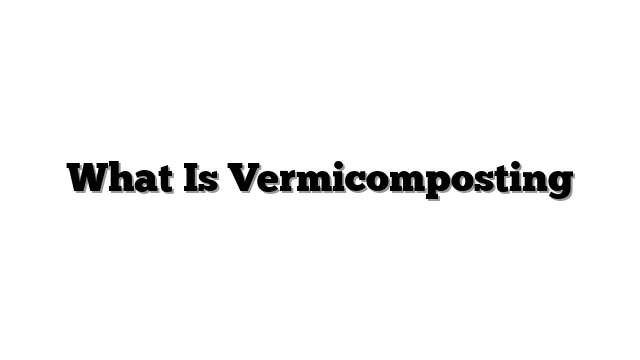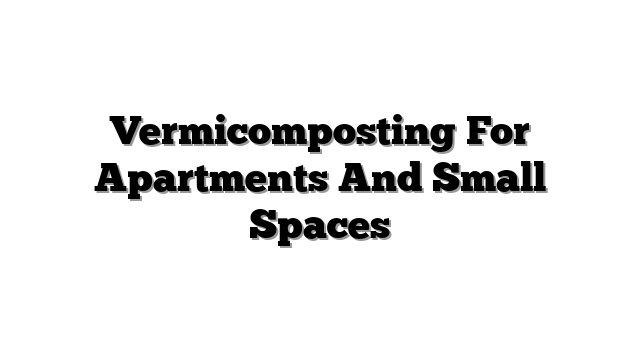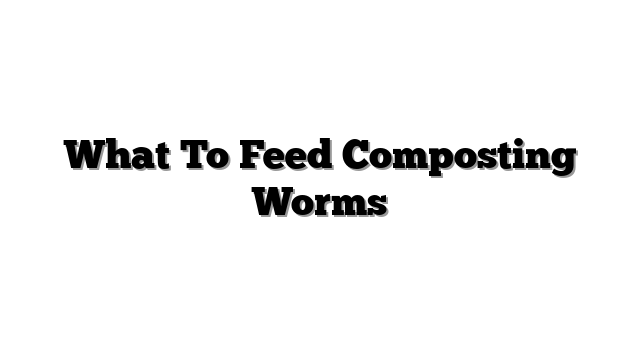Vermicomposting Indoors
Want great soil? Hate wasting food?
Maybe you live in a small place.
Outdoor composting is hard there.
We have a simple answer.
It is called vermicomposting indoors.
This means composting inside your home.
You use special worms.
They eat your kitchen scraps.
They turn waste into amazing soil food.
This soil food is called worm castings.
Gardeners call it black gold.
It helps plants grow strong.
It makes your indoor plants happy.
It helps your garden plants too.
This guide shows you everything.
Learn to start your indoor worm bin.
We show you how to feed worms.
We cover keeping the bin healthy.
Learn to get your worm castings.
Use them for great plant health.
Reduce your organic waste today.
Try vermicomposting indoors.
The Power of Worms: Why Vermicomposting Indoors is a Game-Changer
Think about food scraps.
Fruit peels. Vegetable ends.
They often go in the trash.
They pile up in landfills.
This is a big problem.
Worms offer a fix.
Bring composting inside.
Use a worm bin indoors.
This is vermicomposting indoors.
Beyond the Compost Pile: Unique Advantages of Composting Indoors
Outdoor composting needs space.
It can be messy.
Weather matters a lot.
Cold stops composting outside.
Hot weather can cause smells.
Indoor bins work all year.
Climate does not stop them.
Apartment living is easy now.
Small homes work well.
You need little space.
The bin is right there.
Put kitchen scraps in fast.
It is very convenient.
No trips to an outdoor pile.
The Black Gold: Unlocking the Value of Worm Castings
What are worm castings?
They are worm poop.
Yes, worm poop is amazing.
It is full of plant food.
Think of it as super fertilizer.
Worm castings are very rich.
They have more nutrients.
They hold more beneficial microbes.
Compare them to regular compost.
Compare them to store fertilizer.
Castings are better.
They make soil better.
Soil holds water better.
Air moves better in soil.
Roots grow stronger.
Plants grow faster.
They fight off sickness.
They give you more fruit.
More flowers bloom.
This helps plant health.
Latest studies show this.
Scientists tested plant growth.
They used worm castings.
Plants grew bigger roots.
They were stronger plants.
One expert said this.
“Worm castings are nature’s perfect plant food.”
That was a famous soil scientist.
He studied soil for years.
Using castings is smart gardening.
Contributing to Sustainable Living
We throw away lots of food.
This waste fills up landfills.
It makes bad gases.
You can stop some waste.
Give your scraps to worms.
They turn waste into treasure.
This is a closed loop.
Waste becomes a resource.
This is sustainable living.
It helps the earth.
It helps your plants.
It helps you save money.
Buy less soil food.
Reduce your household organic waste.
It feels good to help.
The Right Worms for the Job: Introducing Red Wigglers
Not all worms work.
Earthworms are not best.
You need special worms.
Use Eisenia fetida.
We call them Red Wigglers.
They love eating food scraps.
They live near the surface.
They stay in the bin.
They eat a lot.
They make many castings.
They are easy to find.
Buy them online.
Buy them at a garden store.
Red Wigglers are perfect.
Your Worms’ New Home: A Step-by-Step Worm Composting Setup
Your worms need a home.
It must be comfortable.
A good home keeps them happy.
Happy worms eat more.
They make more castings.
Setting up is easy.
Choosing the Right Container for Your Indoor Worm Bin
You need a container.
Many options exist.
Buy a special worm bin.
They have layers.
They have good airflow.
Make your own bin.
Use plastic storage bins.
Drill holes for air.
Wood boxes work too.
Make sure air gets in.
Worms need to breathe.
The bin size matters.
Match it to your waste.
A family of four makes more waste.
A single person makes less.
Bigger bin for more scraps.
Some bins have drainage.
This lets extra water out.
Some people skip drainage.
They control moisture carefully.
Plastic bins are cheap.
Wood bins look nice.
Pick what works for you.
Creating the Ideal Bedding: The Foundation of Your Bin
Worms live in bedding.
Bedding is their home.
It holds moisture.
It is also their first meal.
Good bedding is important.
Shredded paper works well.
Use newspaper strips.
Use shredded cardboard.
Coconut coir is great.
It holds water well.
Peat moss works too.
Aged manure can be used.
Mix different things.
Make sure it is moist.
Squeeze a handful.
Water should drip out slowly.
Like a wrung-out sponge.
Not too wet. Not too dry.
Shred materials first.
Soak them in water.
Mix everything together.
Fill your bin partly.
This is their cozy bed.
Introducing Your Red Wiggler Colony
Got your worms? Good.
Put them on top of the bedding.
Leave the bin lid off.
Or keep a light on above it.
Worms do not like light.
They will go down into the bedding.
They hide from the light.
They start exploring.
They get used to their new home.
Give them a day or two.
Do not feed them right away.
Let them settle in first.
How many worms?
Start with one pound.
That is about 1000 worms.
This works for a small bin.
It handles a few pounds of waste.
More waste needs more worms.
They will grow and multiply.
Finding the Perfect Location for Your Indoor Worm Bin
Where should the bin go?
Worms like calm places.
They like steady temperatures.
Not too hot. Not too cold.
Ideal range is 55-75°F.
That is 13-24°C.
Avoid direct sun.
Avoid cold drafts.
Kitchen corner works.
Laundry room is fine.
Basement is often good.
Garage can work if not too hot or cold.
A healthy bin smells earthy.
Like fresh soil.
It should not smell bad.
Pick a spot you can reach easily.
You will add scraps often.
What’s On the Menu? Feeding Your Indoor Worms for Optimal Castings
Worms eat food scraps.
They are not picky eaters.
But some foods are better.
Some foods cause problems.
Feed them the right things.
The Worm Buffet: Approved Food Scraps for Your Bin
Worms love fruits and veggies.
Give them apple cores.
Give them potato peels.
Give them carrot tops.
Banana peels are good.
Melon rinds work well.
Coffee grounds are a favorite.
Include the paper filter.
Tea bags are fine too.
Crushed eggshells help them.
Shredded paper is food.
Shredded cardboard too.
Plain cooked rice is okay.
Plain cooked pasta is okay.
Give them different foods.
Variety is good for them.
It makes better castings.
Make food pieces small.
Chop big things up.
Smaller pieces break down faster.
Freeze scraps first.
Then thaw them.
This breaks cell walls.
Worms eat them faster.
The “Do Not Feed” List: Avoiding Problems
Some foods cause trouble.
Do not give them meat.
No bones. No fat.
Do not give them dairy.
No milk. No cheese.
No yogurt.
Do not give them oils.
No greasy food.
These attract bad pests.
They cause bad smells.
Citrus fruits are tricky.
Oranges, lemons, limes.
Small amounts are okay.
Too much makes the bin too acidic.
Avoid spicy peppers.
Avoid onions and garlic.
Worms do not like them much.
They can make the bin smell.
Do not add treated wood.
No pet waste.
No sick plants.
Avoid salty foods.
These things hurt the worms.
They make the bin unhealthy.
How Much and How Often? Finding the Right Feeding Rhythm
Start slow with food.
Give them a little after settling.
Watch how fast they eat.
Do not add more until food is gone.
This takes a few days.
Then feed small amounts often.
Maybe every few days.
Maybe once a week.
Watch your worms.
See how much they eat.
Do not overfeed them.
This is a common mistake.
Too much food rots.
It smells bad.
It attracts pests.
Bury the food scraps.
Dig a small hole in the bedding.
Put food in the hole.
Cover it with bedding.
Bury food in different spots.
This helps worms spread out.
It helps the bin work better.
The Role of Grit: Helping Worms Digest
Worms have no teeth.
They need help grinding food.
They use grit.
Grit goes in their gizzard.
Like chickens use grit.
Crushed eggshells work well.
Add a little with each feeding.
This helps them eat.
It helps them make castings.
Maintaining a Thriving Indoor Worm Bin
Your worm bin is a living thing.
It needs care.
Happy worms make good castings.
Problems can happen.
Know how to fix them.
Monitoring Moisture and Ventilation: The Keys to a Healthy Bin
Moisture is very important.
Bedding needs to be moist.
Not soaking wet. Not dry dust.
Test it with your hand.
Squeeze a handful of bedding.
A little water should come out.
Like a wrung-out sponge.
Too wet? Add dry bedding.
Shredded paper works great.
Mix it in.
Too dry? Add more moist food.
Spray some water.
Airflow matters too.
Worms need air.
The bin needs air.
Check the air holes.
Are they blocked?
Gently stir the top layer.
Do not dig deep.
Avoid disturbing the worms much.
Good air stops bad smells.
Temperature Control: Keeping Your Worms Comfortable
Remember the best temperature?
55-75°F or 13-24°C.
Keep the bin in that range.
Avoid hot windowsills.
Avoid cold floors in winter.
Move the bin if needed.
Basements are often stable.
Worms slow down when cold.
They can die if too hot or cold.
Troubleshooting Common Worm Bin Problems
Problems can pop up.
They are usually easy fixes.
Odor:
Does the bin smell bad?
It should smell like soil.
Bad smell means something is wrong.
Usually too much food.
Or too much water.
Or not enough air.
Add dry bedding.
Stop feeding for a few days.
Gently turn the top layer.
Check air holes.
Pests:
See small flies?
These are fruit flies.
They like rotting food.
Bury all food scraps well.
Do not leave food on top.
Put a sticky trap nearby.
Small white mites?
They are usually harmless.
They help break down food.
Too many? Bin might be too wet.
Reduce moisture a little.
See white fuzzy stuff?
That is mold.
It is part of breaking down food.
It is usually okay.
Do not worry about it.
Worms escaping:
Are worms crawling out?
They are unhappy.
Check the bin conditions.
Is it too wet? Add dry bedding.
Is it too dry? Add moisture.
Is there enough food? Add food.
Did you feed something bad?
Remove problem food.
Leave a light on above the bin.
Worms hate light.
They will go back inside.
Fix the problem fast.
Food not breaking down:
Is food sitting there?
Not getting eaten?
Pieces might be too big.
Chop food smaller.
Maybe not enough worms yet.
Wait for the population to grow.
Are you feeding the wrong food?
Remove bad food.
Give them things they like.
Adding More Bedding: Refreshing the Habitat
Worms eat bedding too.
They turn it into castings.
The bedding level goes down.
Add fresh bedding sometimes.
Shredded paper is easy.
Mix it in gently.
Make sure it is moist.
This gives worms more home.
It helps keep the bin balanced.
From Scraps to Gold: Harvesting and Using Your Nutrient-Rich Worm Castings
The best part comes now.
Getting the worm castings.
It takes time for worms to work.
But you get amazing soil food.
Knowing When Your Castings Are Ready
Look inside your bin.
Do you see mostly dark stuff?
It looks like rich soil.
It should feel crumbly.
It smells like earth.
You should not see many food scraps.
Maybe some small pieces.
The bin should be full.
Full of this dark material.
Worms will be mixed in it.
It is time to harvest.
This usually takes 3-6 months.
The first time takes longer.
Later harvests are faster.
Harvesting Methods: Separating Worms from Castings
You need to get the worms out.
You want just the castings.
Several ways work.
Migration Method:
This is gentle.
Add fresh bedding and food.
Put it on one side of the bin.
Or add a new layer on top.
Worms will move to the new food.
Leave the old side alone.
After a few weeks, most worms are in the new area.
Scoop out the finished castings.
Some worms might stay behind.
Put them back in the new area.
Dump and Sort Method:
Empty the bin onto a plastic sheet.
Make small piles.
Light makes worms go down.
They hide in the piles.
Scoop off the top layers of castings.
Worms go deeper.
Keep taking top layers.
You will see clumps of worms.
Put the worm clumps back in the bin.
This is faster.
You might miss some worms.
They go with the castings.
That is okay for plants.
Screen Sifting:
Use a screen with small holes.
Put finished bin material on top.
Rub it through the screen.
Fine castings fall through.
Larger pieces and worms stay on top.
Put the worms and big pieces back.
This gives you clean castings.
Storing Your Harvested Worm Castings
Keep castings ready to use.
Store them in a container.
It should let air in.
A fabric bag works.
A plastic bin with holes works.
Keep them slightly moist.
Not wet.
This keeps the good microbes alive.
Castings last a long time stored right.
They keep their power.
How to Use Worm Castings for Amazing Plant Health
Now use your black gold.
Your plants will love it.
Soil Amendment:
Mix castings into soil.
Use it for potting plants.
Mix it into garden soil.
Use about 1 part castings.
Mix with 5 to 10 parts soil.
This adds nutrients slowly.
It improves soil structure.
Top Dressing:
Sprinkle a layer around plants.
Put it on top of soil.
The nutrients go down when you water.
This feeds the plant roots.
It works well for indoor plants.
It feeds outdoor plants too.
Worm Tea:
Make liquid plant food.
Put castings in water.
Let it steep like tea.
Use about 1 part castings.
Mix with 10 parts water.
Let it sit for a day or two.
Strain out the solids.
Use the liquid to water plants.
This gives plants a fast boost.
Seed Starting and Transplanting:
Add castings to seed starting mix.
Seeds sprout stronger.
Roots grow faster.
Use a little when moving plants.
Put some in the planting hole.
This helps plants settle faster.
It reduces transplant shock.
This helps indoor plants.
It helps garden soil.
Supporting 2025 Planting Trends with Castings
Garden trends change.
Worm castings fit many.
Vertical gardening is popular.
Plants grow up walls or frames.
They need good soil in small spaces.
Castings make potting mix better.
They feed plants in limited soil.
Native plants are trending.
People want plants for their area.
These plants need healthy soil.
Castings make soil healthy.
They feed popular houseplants too.
Castings are good for any plant.
Your Vermicomposting Questions Answered: Common FAQs
People ask many questions.
Here are some common ones.
Does Vermicomposting Indoors smell?
A healthy bin smells earthy.
Like forest floor.
Bad smells mean a problem.
Usually too much food.
Or too much water.
Not enough air.
Fix the conditions.
The smell goes away.
It should not smell bad.
What kind of worms do I need for my indoor worm bin?
Use Red Wigglers.
Their science name is Eisenia fetida.
They eat food scraps fast.
They live well in bins.
They are the best choice.
How long does it take to get worm castings?
The first harvest takes time.
Maybe 3 to 6 months.
Worms need to get settled.
They need to eat bedding first.
They need to grow their numbers.
Later harvests are faster.
Maybe every 2-3 months.
It depends on bin size.
It depends on how much you feed.
It depends on worm numbers.
Can I put [specific common food scrap, e.g., citrus peels, bread] in my worm bin?
Small amounts of citrus are okay.
Lots of citrus makes the bin too sour.
Worms do not like that.
Bread and cooked food can attract pests.
Do not add much.
Bury them deep if you do.
Stick to fruits and veggies.
Add paper and coffee grounds.
This keeps the bin happy.
My worms are trying to escape! What should I do?
Worms want to leave a bad home.
Check everything.
Is the bin too wet?
Is it too dry?
Is it too hot?
Is it too cold?
Is there enough food?
Did you feed them something bad?
Fix the problem.
Add dry bedding if too wet.
Add moist food if too dry.
Check the temperature.
Remove bad food.
Worms will go back in.
Leave a light on nearby for a while.
They hide from light.
Start Your Indoor Vermicomposting Journey Today!
You learned about worms.
You learned about indoor bins.
It is not hard to start.
Get a bin.
Add bedding.
Get some red wigglers.
Feed them kitchen scraps.
Watch them work their magic.
They turn waste into treasure.
You get amazing worm castings.
Use castings for your plants.
See them grow strong and healthy.
Reduce your organic waste.
Help the planet.
Grow beautiful plants.
Vermicomposting indoors gives you both.
It is great for gardening beginners.
It is great for experienced growers.
Start your indoor worm bin now.
Your plants will thank you.
The earth will thank you.







